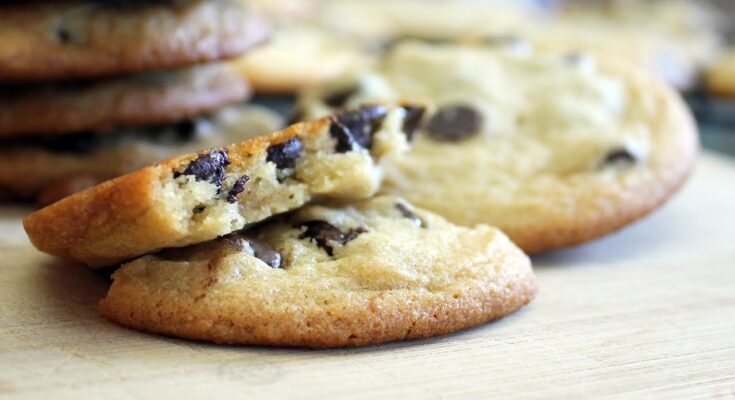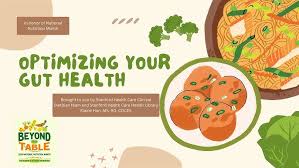Vegan Cookies Recipe: You might be wondering—why go vegan with cookies? Aren’t cookies already delicious the way they are? Well, sure—but switching to vegan cookies doesn’t just mean cutting out animal products like eggs and butter. It also means opening a door to a healthier, more inclusive, and often tastier world of baking. Vegan cookies are more than a trend; they’re a lifestyle choice for many who care about animal welfare, sustainability, and their own health.
But don’t worry, you won’t be sacrificing flavor or texture. With a few creative tweaks, vegan cookies can rival or even outdo traditional ones. Plus, they’re often safer for groups since they avoid common allergens like eggs and dairy.
Cookies for everyone? Now that’s sweet.
What Makes a Cookie Vegan?
So what exactly makes a cookie vegan? It’s all about the ingredients. A traditional cookie might include eggs, milk, and butter—all of which come from animals. Vegan cookies replace these with plant-based alternatives that serve the same purpose: binding the dough, adding moisture, and delivering flavor.
Here are a few simple swaps:
- Butter → Vegan butter or coconut oil
- Eggs → Flax eggs, chia eggs, applesauce, or mashed bananas
- Milk → Almond milk, soy milk, oat milk, or any plant-based milk
These changes might seem small, but they make a big impact on ethics and sustainability without compromising taste. Vegan cookies are a win-win: better for the planet, kinder to animals, and still melt-in-your-mouth delicious.
Benefits of Baking Vegan
Still not convinced? Let’s look at the benefits of baking vegan:
- Healthier Choices – Vegan cookies tend to be lower in saturated fat and cholesterol.
- Inclusive – Great for people with lactose intolerance, egg allergies, or those following a plant-based diet.
- Environmentally Friendly – Using plant-based ingredients generally has a lower carbon footprint.
- Cost-Effective – Eggs and butter can get pricey. Staples like flax seeds and plant milk are often cheaper.
- Customizable – Vegan recipes are incredibly flexible, making it easy to experiment with flavors and textures.
Once you’ve tried a warm, chewy, chocolate chip vegan cookie straight from the oven, you might never go back.
Ingredients You’ll Need
Basic Vegan Cookie Ingredients
Before diving into baking, let’s line up the essentials. You’ll find that most of these are probably already sitting in your pantry. Here’s your vegan cookie starter pack:
Dry Ingredients
- 2 cups all-purpose flour
- 1 tsp baking soda
- ½ tsp baking powder
- ½ tsp salt
- ¾ cup brown sugar
- ¼ cup granulated sugar
Wet Ingredients
- ½ cup vegan butter (softened)
- ¼ cup plant-based milk (like almond or oat)
- 1 tbsp flaxseed meal + 2.5 tbsp water (as egg replacement)
- 1 tsp vanilla extract
Add-ins (optional but delicious)
- 1 cup vegan chocolate chips
- ½ cup chopped nuts
- ½ cup dried fruit (like cranberries or raisins)
These ingredients provide the structure, sweetness, moisture, and flavor you’re looking for in a cookie. The magic happens when they come together in the right ratios—and that’s what we’ll walk you through next.
Optional Add-ins and Variations
Want to take your cookies to the next level? The beauty of vegan baking is how customizable it is. You can swap out or add in all kinds of flavors and textures. Here are some tasty ideas:
- Spices – Add a dash of cinnamon, nutmeg, or cardamom for a cozy twist.
- Citrus Zest – Lemon or orange zest adds a fresh pop.
- Nut Butters – Mix in peanut butter, almond butter, or even tahini for a richer flavor.
- Oats – Rolled oats can add chewiness and fiber.
- Coconut Flakes – For a tropical spin, toss in some shredded coconut.
Don’t be afraid to experiment. The goal is to make cookies you love.
Substitutes for Common Non-Vegan Ingredients
If you’re adapting a traditional recipe or want to create your own, knowing good substitutes is crucial. Here’s a handy table to keep things simple:
| Non-Vegan Ingredient | Vegan Substitute | Purpose in Baking |
|---|---|---|
| Eggs | Flax egg, chia egg, applesauce | Binding, moisture |
| Butter | Vegan butter, coconut oil | Richness, texture |
| Milk | Almond, soy, oat, cashew milk | Moisture, mixing ingredients |
| Honey | Maple syrup, agave nectar | Sweetener |
| Chocolate chips | Dairy-free or dark chocolate | Flavor |
With these easy swaps, you can transform almost any cookie recipe into a vegan masterpiece.
Step-by-Step Guide to Making Vegan Cookies
Step 1 – Gathering Your Ingredients
Prepare flour, baking soda, salt, brown sugar, coconut oil or vegan butter, plant-based milk, vanilla extract, and any mix-ins like chocolate chips or nuts. Preheat your oven to 350°F (175°C) and line a baking sheet with parchment paper.
Step 2 – Mixing the Wet and Dry Ingredients
In one bowl, whisk together the dry ingredients—flour, baking soda, and salt. In another, cream the coconut oil, brown sugar, vanilla, and milk until smooth.
Step 3 – Combining Everything Together
Gradually add the dry mix into the wet ingredients, stirring gently until a dough forms.
Step 4 – Scooping and Shaping the Cookies
Scoop tablespoon-sized portions, roll into balls, and flatten slightly on the baking sheet.
Step 5 – Baking the Cookies to Perfection
Bake for 10–12 minutes until golden around the edges. Cool before serving—soft, chewy, and completely dairy-free bliss!
Expert Tips for Perfect Vegan Cookies
How to Get the Right Texture
Getting that ideal cookie texture—crispy on the edges, soft and chewy in the center—can be tricky, but with the right techniques, it’s totally achievable. The secret? Balance and precision.
Start with your fat source. Vegan butter is ideal for cookies because it mimics the creaminess and structure of dairy butter. If you prefer coconut oil, use refined coconut oil for a neutral flavor. Keep in mind, solid fats (like chilled vegan butter) give you a denser, chewier cookie, while liquid oils can lead to flatter, crispier results.
When it comes to sweeteners, brown sugar is your best friend. It retains moisture thanks to its molasses content, which helps keep cookies soft even after baking. Mixing it with white sugar gives a crisp edge and golden finish.
Another crucial element? Chilling your dough. This step gives the flour time to absorb the wet ingredients, which improves structure and prevents over-spreading. Chill the dough for at least 30 minutes or overnight for the best results.
Lastly, don’t skip the oven preheat. Starting cookies in a fully heated oven ensures proper rise and consistent texture. Bake one test cookie first—adjust if it spreads too much (add flour) or is too dry (add a splash of milk).
Adjusting for High Altitude or Humidity
Baking at high altitudes or in humid environments presents some challenges, but nothing that can’t be handled with a few simple tweaks.
High Altitude Baking
When you’re up in the mountains, cookies can rise and fall too fast due to lower air pressure. Here’s how to fix it:
- Reduce baking soda/powder slightly (by 1/8 to 1/4 tsp)
- Increase flour by 1–2 tablespoons
- Add a bit more liquid (plant milk or flax egg)
- Lower sugar by 1–2 tablespoons
This helps your cookies hold their shape and avoid the dreaded flat, cakey texture.
Humid Climates
If you’re in a sticky environment, your flour can absorb moisture from the air, making the dough too wet. Combat this by:
- Adding a tablespoon or two of extra flour
- Storing ingredients in airtight containers
- Chilling dough longer to firm it up
Also, try to bake during the cooler part of the day or use a dehumidifier in your kitchen for better results.
Making Ahead and Storing Tips
Vegan cookies are perfect for make-ahead baking. You can prep the dough in advance, refrigerate, or freeze it for later use. Here’s how to keep your cookie game strong at all times:
Refrigerating Dough
- Wrap the dough tightly in plastic wrap or store it in an airtight container.
- Chill for up to 3 days in the fridge.
- Let it come to room temp for 10–15 minutes before scooping and baking.
Freezing Cookie Dough
- Scoop dough into balls and place them on a tray.
- Freeze until solid (about 1–2 hours), then transfer to a ziplock bag.
- Label with the date and type—dough stays good for up to 3 months.
To bake from frozen, add 2–3 minutes to the baking time. No need to thaw!
Storing Baked Cookies
- Keep cookies in an airtight container at room temperature for up to 5 days.
- Add a slice of bread to the container to keep them soft longer (the cookies absorb the bread’s moisture).
- Freeze baked cookies for longer storage—just let them cool completely and store in freezer-safe bags.
Nutritional Information and Allergen Advice
Common Allergens in Vegan Cookies
While vegan cookies avoid animal products, they can still include other common allergens like gluten, nuts, and soy. Here’s how to identify and avoid them:
- Flour – Regular all-purpose flour contains gluten. Use certified gluten-free blends for sensitive diets.
- Nuts – A popular add-in for texture and protein. If baking for a crowd, keep them optional.
- Soy – Some vegan butters and chocolate chips may include soy. Read labels to ensure they’re soy-free.
When sharing or serving, it’s always helpful to label your cookies with allergen info.
Making Them Gluten-Free
Want your cookies to be both vegan and gluten-free? You’re in luck. With the right flour blend, the texture can be just as delicious. Here are tips for making the swap:
Flour Alternatives
- Use a 1:1 gluten-free baking flour that includes xanthan gum (for binding).
- Avoid single flours like almond or coconut for cookie recipes—they don’t mimic the structure well.
Extra Binders
- If your flour doesn’t include xanthan gum, add ½ tsp per cup of flour.
- Flax or chia eggs also help bind the dough.
Gluten-free doughs can be a bit more fragile, so handle gently and consider chilling before baking.
Reducing Sugar and Oil
Trying to make your cookies a little healthier? You can totally dial down the sugar and oil without ruining the recipe.
Sugar Swaps
- Replace half the sugar with maple syrup or date sugar.
- Use coconut sugar for a lower glycemic index.
Cutting sugar too much can affect texture and browning, so start with small reductions—try reducing by ¼ cup at first.
Oil Alternatives
- Replace some or all vegan butter with unsweetened applesauce for a fat-free option.
- Try mashed banana or avocado for added creaminess and moisture.
Just know that texture may vary slightly, but the flavor will still be delicious.
Popular Vegan Cookie Flavors to Try
Chocolate Chip
Ah, the classic. Vegan chocolate chip cookies are just as irresistible as the traditional version, if not better. They’re soft, chewy, and studded with gooey, dairy-free chocolate chunks that melt perfectly into each bite.
Here’s a quick flavor tip: sprinkle a tiny pinch of sea salt on top before baking to elevate the sweetness and add that irresistible salty-sweet contrast. Want them extra gooey? Underbake by one minute and let them finish cooking on the tray.
You can make these gluten-free or refined-sugar-free, and they’re still a hit at parties, bake sales, or midnight snack attacks. Vegan doesn’t mean missing out—it means leveling up.
Peanut Butter
If you love rich, nutty flavor with a tender bite, vegan peanut butter cookies are your new best friend. Made with just a few ingredients, these cookies are usually flourless, naturally gluten-free, and packed with protein and flavor.
For an easy version, combine:
- 1 cup peanut butter
- ¾ cup coconut sugar or brown sugar
- 1 flax egg
- ½ tsp baking soda
- Optional: dark chocolate chips or chopped peanuts
Scoop and bake for 10–12 minutes. Boom—you’ve got warm, slightly crisp cookies with a gooey center that screams comfort food.
Swap peanut butter with almond or sunflower seed butter for allergy-friendly versions.
Oatmeal Raisin
Don’t sleep on oatmeal raisin cookies—these cozy bites are a wholesome treat loaded with texture and warmth. The oats bring chewiness, the raisins add bursts of sweetness, and a little cinnamon ties it all together.
Use rolled oats (not quick oats) for the best texture. For extra richness, soak your raisins in warm water (or rum!) before adding them to the dough.
Want to mix it up? Swap raisins with cranberries, add walnuts, or drizzle with vegan white chocolate for a festive twist.
Oatmeal cookies are naturally heartier and more filling—great for breakfast-on-the-go or as a lunchbox treat.
Serving Suggestions and Pairings
Best Drinks to Serve With Vegan Cookies
There’s something magical about pairing cookies with a cold or warm drink—it brings out the flavor and creates that perfect comfort moment.
Here are some killer pairings:
- Oat Milk Latte – Creamy, slightly sweet, and pairs beautifully with chocolate chip cookies.
- Chai Tea – Spicy and warm, ideal with oatmeal or peanut butter cookies.
- Almond Milk – The classic cookie dunk, especially for crunchy varieties.
- Matcha Latte – Earthy and refreshing, balances out rich, sweet cookies.
- Hot Cocoa (vegan) – Over-the-top indulgence when paired with a gooey cookie.
Want to impress guests? Serve your cookies with tiny glasses of chilled plant milk or espresso shots for a cute presentation.
Presentation and Packaging Ideas
Whether you’re gifting, selling, or just enjoying your vegan cookies, presentation makes a big difference. Here are creative ways to show them off:
- Glass Jars – Stack cookies in mason jars tied with twine and a handwritten tag.
- Baking Boxes – Use bakery-style kraft boxes with parchment lining.
- Treat Bags – Clear cellophane bags with ribbons—great for party favors.
- Cookie Towers – Stack 3–4 cookies and tie them with a festive string.
- Eco-Friendly Wrap – Wrap in reusable beeswax wraps or cloth napkins for sustainable gifting.
For selling or giving as gifts, always label your cookies clearly with “Vegan,” allergen info, and flavor notes.
Troubleshooting Common Issues
Cookies Too Dry or Crumbly
If your cookies turn out dry or crumbly, chances are the dough was too dry or the cookies were overbaked. Here’s how to fix and prevent that:
- Too much flour? Always spoon flour into your measuring cup and level it off—don’t scoop.
- Too little fat or moisture? Add a tablespoon more plant milk or vegan butter next time.
- Overbaked? Set a timer and check cookies 1–2 minutes early. They should look slightly underdone when you pull them out.
- Didn’t chill the dough? Try chilling next time for a softer texture.
You can often revive dry cookies by microwaving for 10 seconds with a damp paper towel.
Cookies Spreading Too Much
When cookies turn into flat pancakes, it’s usually one of a few culprits:
- Melted butter – If your vegan butter was too soft or melted, your dough won’t hold shape. Chill the dough for 30–60 minutes.
- Too little flour – Add 1–2 tablespoons more to give structure.
- Baking sheet too hot – Let your trays cool completely between batches.
If you love thick cookies, scoop your dough into tall mounds and chill for at least an hour before baking.
FAQs about Vegan Cookies Recipe
Can I freeze vegan cookie dough?
Absolutely! Scoop dough into balls, freeze on a tray, then store in ziplock bags. They’ll last up to 3 months and can be baked straight from frozen.
What’s the best vegan butter for baking?
Look for unsalted, plant-based butters that come in stick form. Brands like Earth Balance, Miyoko’s, and Flora work great.
Can I make vegan cookies without sugar?
Yes, though the texture may change. Try using date paste, mashed bananas, or maple syrup as alternatives, but be ready to experiment with ratios.
How long do vegan cookies stay fresh?
Stored in an airtight container at room temperature, they stay fresh for 4–5 days. Add a slice of bread to keep them soft.
Can I use coconut oil instead of vegan butter?
Yes, but use solid coconut oil (not melted) for better texture. Note that it may add a slight coconut flavor to your cookies.
Conclusion
Vegan cookies are more than just a trendy dessert—they’re a delicious, compassionate, and endlessly customizable treat for everyone. Whether you’re baking for yourself, sharing with loved ones, or selling at the local market, these plant-based goodies are a surefire hit.
From classic chocolate chip to nutty peanut butter and hearty oatmeal raisin, you’ve got endless flavor options to explore. With simple ingredient swaps, you can make cookies that are kind to animals, the planet, and your taste buds.
So grab your mixing bowl, get creative, and enjoy every chewy, gooey, chocolatey bite.



